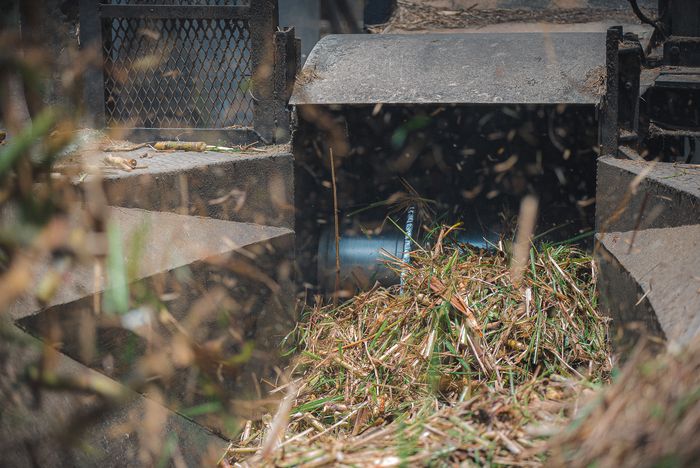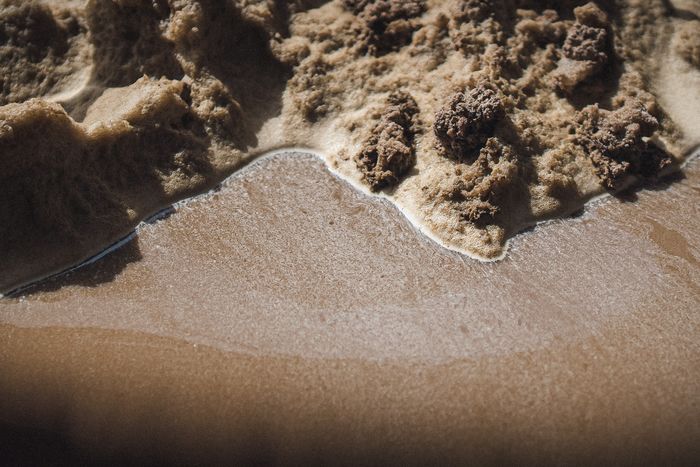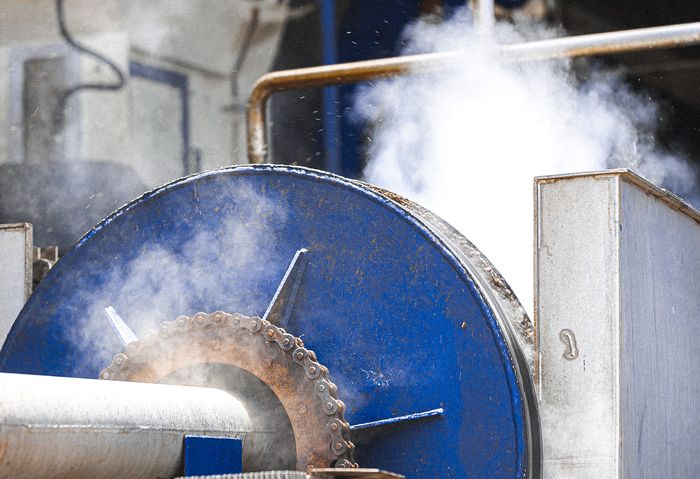
The beautiful distillery in the North of Martinique is one of the oldest on the island and holds an important place in the hearts of agricultural rum lovers. It is also a distillery that has remained relatively discreet since the new breath of rum appeared about ten years ago. Apart from its aficionados, most of us know very little about Depaz in detail.
However, the distillery has been taking matters into its own hands for some time now with a redesign of the range and new bottlings ( cask strength in particular). In this dynamic of change, Benoît Bail ( La Confrérie du Rhum , Agricole Tour, etc.) was recently named brand ambassador for the brand. We asked him a few questions to take stock of Depaz rums and answer a few outstanding questions:
We know very few details about the Depaz distillery, can you tell us about the types of cane used, the terroir, the fermentations, the distillation, the aging practices…? (that’s a lot in one question :D)
Indeed, that's a lot for just one question, but I'll try to be as complete as possible. (laughs)
First of all, you should know that Depaz is located on volcanic land on the slopes of Mount Pelée, which covers 160 hectares. This area is perfect for growing sugar cane thanks to the young age of the soils, still full of minerals due to the eruption of Mount Pelée just over a century ago, but also thanks to its relatively low rainfall (Foehn effect, trade winds and partly sandy soils that drain water and do not retain it).
All this generally allows us to obtain canes concentrated in sugar and less in water.
Concerning our sugar cane varieties, we currently use 3 varieties, namely a majority of blue cane (B 69.566), but also cinnamon cane (B 82.0333) and zikak cane (B 80.08). We also regularly try new varieties of sugar cane, to see if they adapt well to our terroir. Currently, for example, we are testing red cane.
The harvest is done entirely by machine and the canes are transported from the fields to the distillery in less than 24 hours, since most of our land is located nearby all around the estate.
For the fermentation part, we use a variety of baker's yeasts , which until recently we were the only ones to use. Our fermentation is then on average 48 hours and we thus obtain a must of approximately 6% degrees, ready to distill, which is quite high.
For the distillation part, we have a Creole column dedicated to Depaz rums, which complies with the regulatory framework imposed by the AOC. Our pouring rum has an alcohol content of 72%.
To conclude this overview, we practice our aging in two separate types of barrels. On one side, second-hand American oak barrels , then on the other French oak barrels that previously contained cognac before practicing different blends of the two types of barrels with a ratio of approximately 80% - 20% respectively. We also deliberately practice longer aging times than what the AOC provides. Thus, our old rum is not a simple 3 year old, but will have aged for a minimum of 4 years, our VSOP for 7 years and our XO minimum 8 years (blend of 8-10 years). This allows us to offer rums of high taste quality with significant richness and complexity.
Can you tell us about cellar master Nora Carrion-Martinez and her atypical profile for Martinique , given her Cuban training?
Nora is an expert in her field who joined the Depaz team in the early 2000s. She is behind most of the new vintages we know in the range. Her Cuban training gives her a character and a way of doing things that are unique to her, such as not reducing her rums before aging them, which is a practice she brought back from Cuba . She has also trained some great rum artisans who excel, something she is also very proud of.
She is a wonderful person with a strong character (Latina obliges…), whose know-how and humility we can only respect.
I am personally a fan of Depaz Doré , is the recipe for the new bottling unchanged?
The recipe remains, in fact, unchanged. A few years ago, we decided to redesign the packaging of the range in order to bring a little more unity, because with all these bottles of different shapes and colors, we were no longer really getting by and it was especially not clear for the consumer.
Today, we are proud to be able to offer premium packaging with exceptional products, corresponding to the image that we wish to reflect.
Did the Depaz distillery expect the phenomenal success of its cask strengths?
I think that at first, as is often the case, we try to follow trends and we want to satisfy consumers. Offering brut de fûts was therefore a logical next step in renewing the range and in the evolution of the brand and when we tasted the first samples of brut de fût 2000, at the time, everyone was unanimous and we knew that it could only work.
It’s great that we have such old rums in our cellars. It’s not every day that you come across 18-year-old rums, and even less so when they’re offered in cask strength.
Can you tell us about the XO prestige vintage and the composition of the blend?
The Prestige XO cuvée is a blend of rums aged between 9 and 11 years in bourbon and cognac barrels, like the majority of our blends. This historic reference has long been the top reference in the Depaz range.
Even though today we offer other products that are perhaps even more complex in terms of taste, it remains an excellent rum for lovers of fine products.
How come the successful 2002 vintage is still available? The quantities must have been enormous that year!
So this is a question that comes up quite often indeed... Apart from the fact that this year has been an excellent year for a large number of distilleries on the island, we have the impression that the source of this rum is inexhaustible...
However, when we look at the sales figures for this vintage, we realise that in reality, if it seems to be inexhaustible, it is simply because sales are not as high as we think and the bottles we see on social networks or in the stocks at wine merchants are simply not new.
I would like to point out that the vat showing the label for the 2002 vintage at the entrance to the distillery is only an advertising panel and does not contain this rum in any way, otherwise the volumes would still be very large.
We have heard here and there that 50% and 55% white rums will no longer be sold. Can you reassure us on this?
The ultimate reference in white wine outside of Martinique is the Cuvée de la Montagne which is 45% ABV and thus matches the alcoholic strength of the rest of the range. The 50% and 55% are currently only sold on the island, even if some wine merchants in mainland France still have a few bottles on their shelves at sometimes very attractive prices… But that's between us 😉
These white rums are unique in their authentic side that I would describe as rich and "rustic", what is this due to? The vesou? The fermentation? The distillation? (Perhaps all of these at once)
It is, in fact, due to a bit of all of that at the same time... Between the specificity of our terroir, the types of sugar cane used, the higher sugar content and a longer fermentation than average, we manage to obtain extremely rich white rums which also provide a good base for our aging.
What was the idea behind the Cuvée de la Montagne , and its unusual 45% alcohol content? Perhaps to invite the public to discover the white agricultural wine in pure tasting?
Absolutely, the idea was to bring the consumer towards tasting a pure white rum , a bit like an eau-de-vie , with a titration that corresponds according to our cellar master best to the tasting of Depaz rums. We thus succeeded in creating a product of an incredible aromatic richness , despite a lower alcohol content and thus making it a white rum considered today as high-end with notes of lime and slightly sweet, as if the ti-punch was already ready in the bottle.
What share of Martinique production does Depaz represent?
The Depaz distillery today represents a little more than 1/8th of the volumes of rum produced in Martinique (1.8 million liters).
Is Depaz present outside Europe?
Depaz is currently present in Asia and more precisely in Japan and we should also be present on the American market by the end of the year.
Do you have any scoops on the near future of Depaz?
One or two new vintages should appear during the course of this year, but I can't say more for the moment except that it will be something never seen before in our range.
Thank you Benoît and looking forward to the rest!!
Photo Credits: Dan Beal




Very interesting article, thank you!
Indeed, the Depaz distillery is relatively discreet but it has a lot of assets in addition to its products of course, there is this unique site as well as the men and women who make this rum. These are great stories to tell.